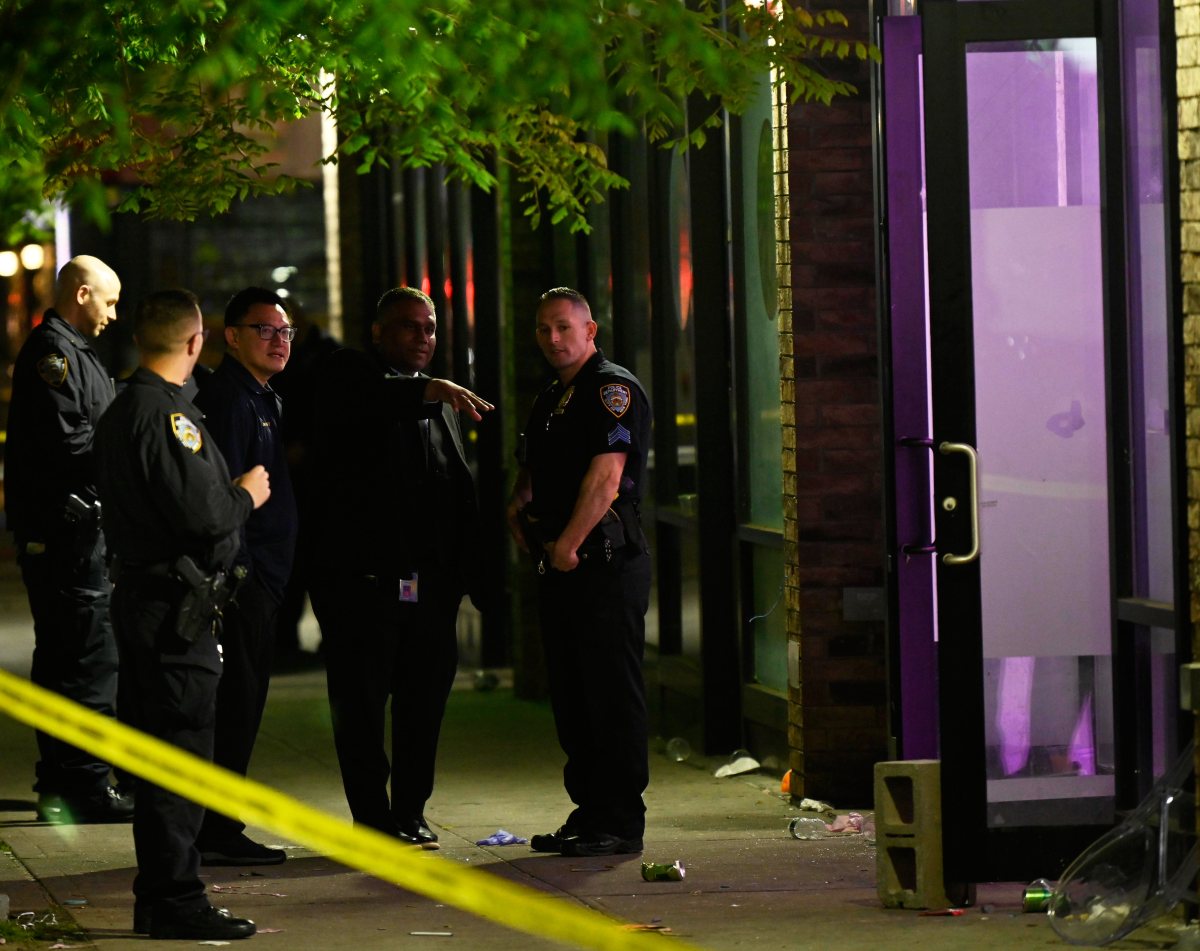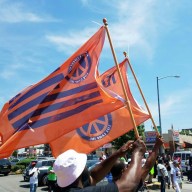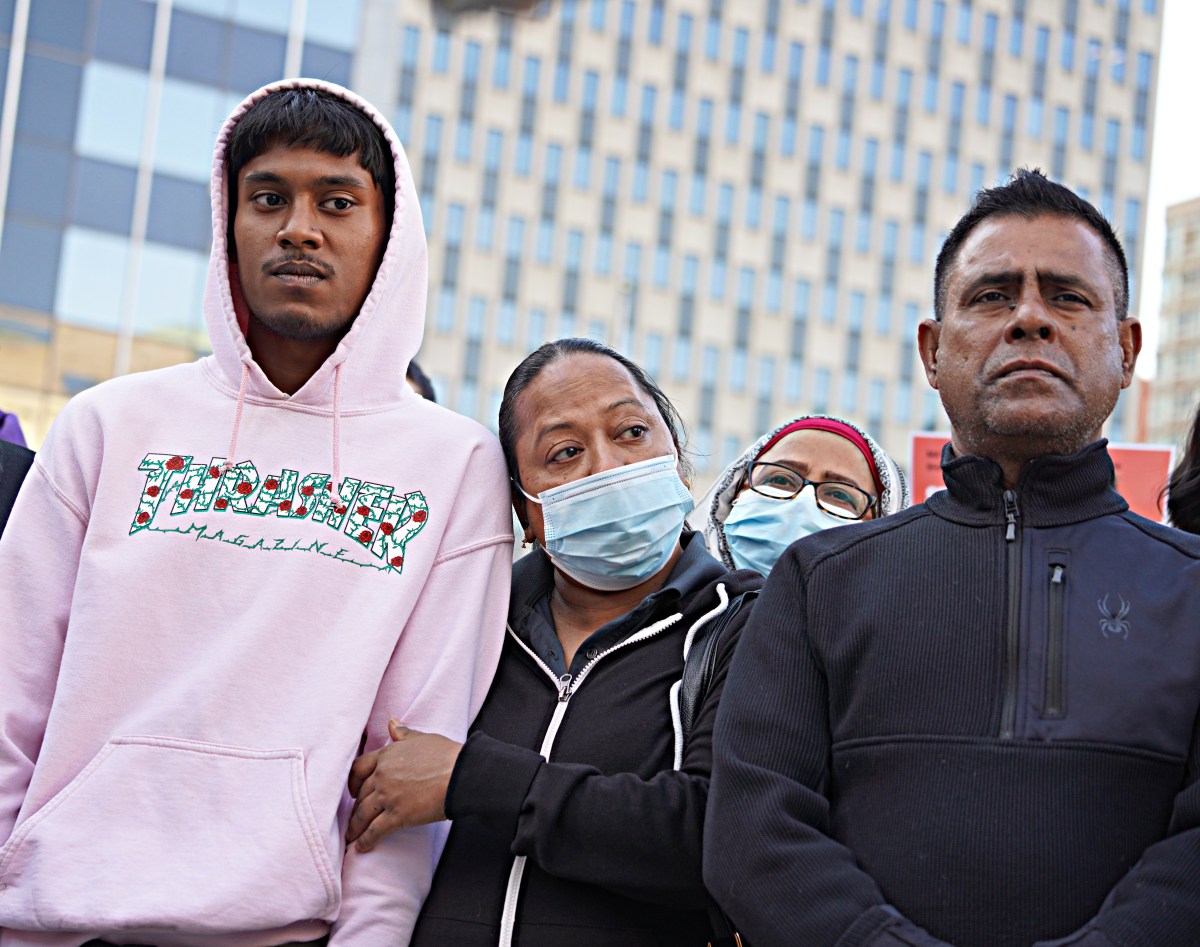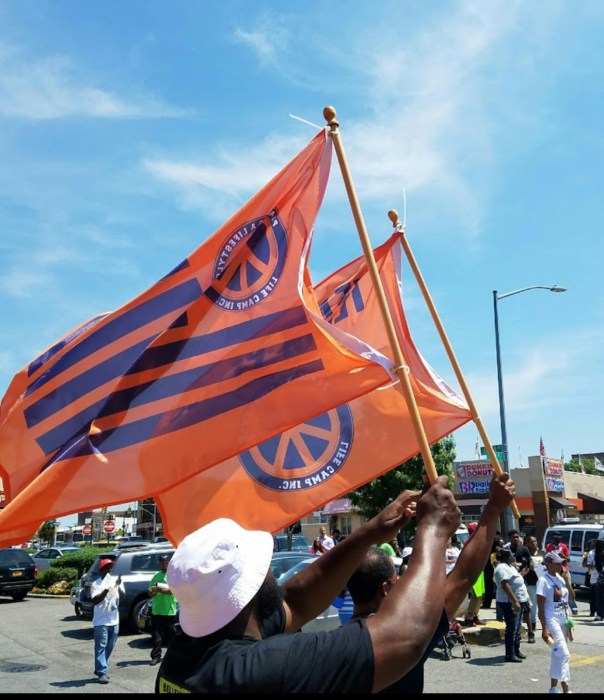By Thomas Tracy
Felony crime in Patrol Borough Brooklyn South dropped by three percent in 2005, according to unofficial year-end crime statistics. Police said that a small rise in youth-on-youth crime in some of the precincts in the southern end of Brooklyn has caused robbery numbers in Brooklyn South to jump by .2 percent, from 4,278 in 2004 to 4,290 at the close of 2005, according to high-ranking officials. The number of homicides remained the same at 95, while the number of shooting incidents jumped by over two percent, following a disturbing trend faced throughout the city. Year-end statistics, which have yet to be made public, show that there were a total of 22,935 felony crimes in 2005, 539 less than the 23,674 the year before. The numbers show that rape reports in the area have dropped by 7.4 percent, felony assaults jumped by two percent and burglaries have dropped by 11.8 percent, from 5,229 in 2004 to 4,619 this year. Grand larcenies, or thefts of $1,000 or more, jumped by 2.4 percent while car thefts fell by 8.8 percent. Over the last 12 years, felony crime in Patrol Borough Brooklyn South has fallen by 68.3 percent, according to Assistant Chief Joseph Fox, the commanding officer of Patrol Borough Brooklyn South. “We track crime every day,” said Fox on Wednesday, as he finished up orientation for the nearly 300 new officers assigned to start their careers in Patrol Borough Brooklyn South. Most of the new officers have been assigned to the borough’s Impact Zones, where additional cops are added to crime-prone areas to improve quality of life. “When we looked at the numbers, we found a trend in the spring that resurfaced in the fall and that trend had to do with teen on teen crime.” Officials determined that they should focus on preventing crime among teens. “We didn’t want to target our youth,” Fox said. “But we wanted to create safe passages for our young people as they go to and from school.” Once the plan was implemented, crimes against youths decreased, said Fox. “It was a robust plan that involved the redeployment of specialized units and police officers,” he said, adding that the continued crime reductions in the command were from the dedication of “all of our police officers, our commanders and all of our support units like narcotics, detectives and warrants squads.” Fox also credited all of the community leaders and activists who “helped us identify trends and conditions that threaten our quality of life.” “It was a good year,” said Fox. “Our planning and implementation of Impact Zones have given us more crime reductions.” Fox admitted that there was a “marginal” increase in gun violence this year. Unofficial statistics show that there were six more shootings in 2005 than in 2004, which capped off at 242. Out of the 248 shootings in 2005, a total of 295 people were wounded, according to the numbers. The number of gun arrests in Patrol Borough Brooklyn South was also up for the year, by two percent. “Our shootings are up slightly, but our arrests are also up,” said Fox. “We will be redoubling all of our efforts.” According to the hard numbers, there were over 43,000 felony arrests in Brooklyn South in 2005 – two percent more than the year before. Approximately 6,000 of these arrests were made by various narcotic units in Brooklyn South. A Sampling of Front Runners According to statistics filed on December 18– the last time the city published the CompStat crime reports– the 61st Precinct in Sheepshead Bay was leading the pack with an 8.82 percent drop in crime. The precinct, however, was up in homicides, from two in 2004 to seven in 2005. The 61st Precinct led their reductions with a 25 percent drop in burglaries. The precinct with the worst crime stats by December 18 was the 60th Precinct, which saw a 10 percent jump in felony crime. Homicides, however, were down by nine. Officials said that there were 17 homicides in the 60th Precinct in 2004. In 2005 only 8 homicides had been reported. Cops in the 69th Precinct in Canarsie had the second highest crime reductions in our area with a five percent drop in crime, which is roughly the city standard. The 63rd Precinct, which covers residents living from Marine Park to Bergen Beach, found a 2.7 percent drop in crime at year’s end. Robberies and felony assaults, however, both saw increases, according to officials. “We’re going to be focusing on our robberies and felony assaults,” said Deputy Inspector Kevin McGinn, the commanding officer of the 63rd Precinct. “We have 10 new rookies that just came into the command and we’re going to put them on our robbery posts on Ralph Avenue and Flatbush Avenue and Avenue U.” The increase in felony assaults, he said, could be rectified by improving the precinct’s domestic violence staff. “We’re bringing a lot more help to our domestic violence unit,” he said. Inspector Robert Richard, the commanding officer of the 70th Precinct, said that felony crime in Flatbush has fallen 7.4 percent by year’s end, with a 20 percent reduction in burglaries and a 27 percent drop in grand larcenies. Robberies were down by one percent: 790 muggings in 2005 versus 798 in 2004. The number of homicides reported to the command, however, was up for the year. Officials said 11 homicide investigations took place in 2005. In 2004, only nine homicides had occurred. According to statistics, the number of shootings in the command fell by roughly 33 percent. Officials said that this year there were 26 shooting victims, as compared to 39 the year before. Despite all of this, Richard said that he has decided to open up a second Impact Zone in the 70th Precinct. He plans to place the 150 new officers assigned to the Lawrence Street stationhouse in the zones to walk the beat. “The borders are not written in cement,” he said. “But for the first time we are going to have two zones in the command.” Richard doesn’t see the zones as being a detriment to the community. “It’s just the opposite,” he said. “If I had 300 new officers I would make four zones. It’s not a negative thing. It’s making policing more effective by concentrating police officers in one area. It’s the same concept as putting a cop on every block.” “You can never run out of reductions,” he said.




























